Hull # - Alexandra
Image Gallery
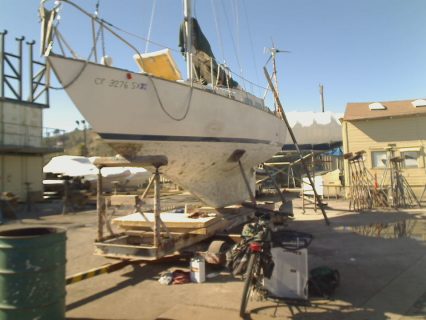
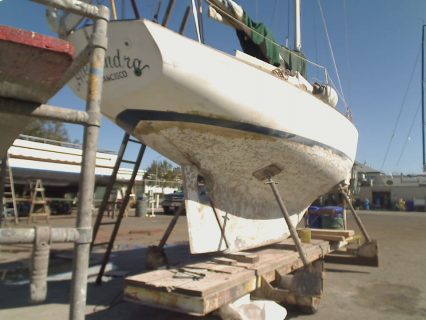
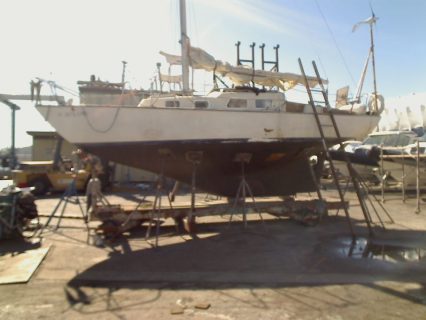
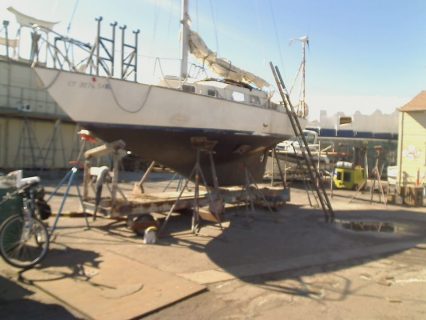
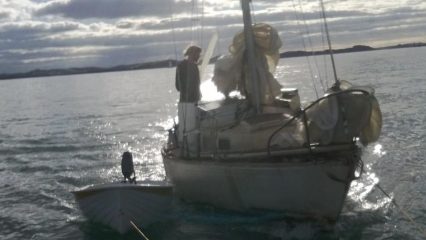
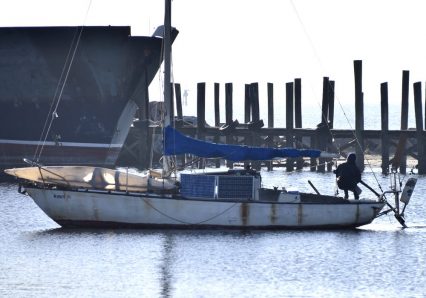
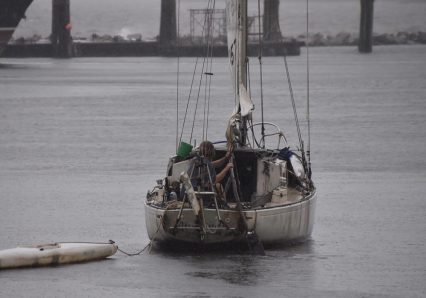
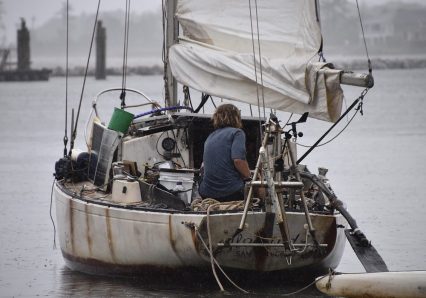
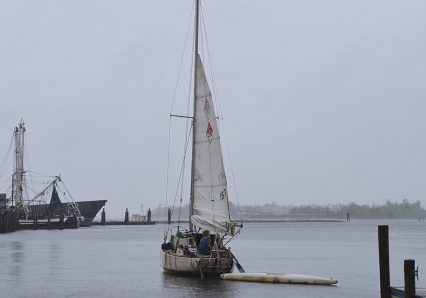
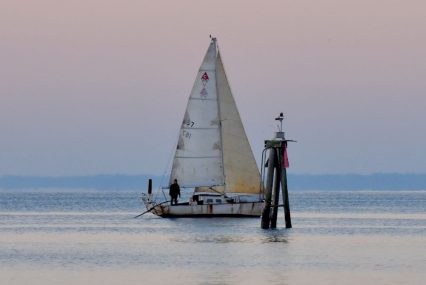
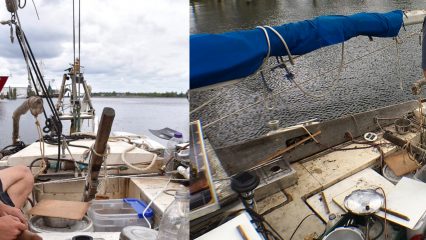
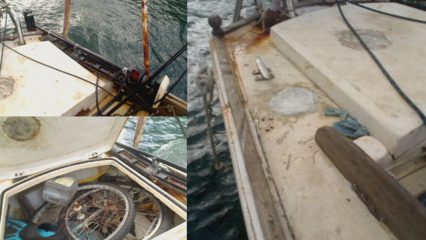
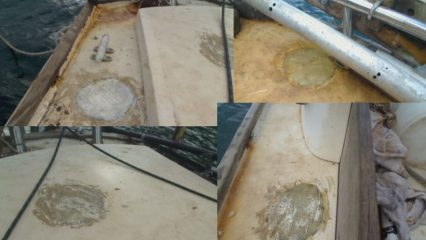
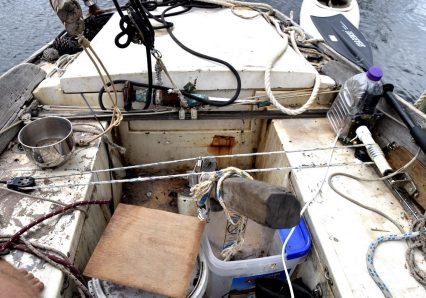
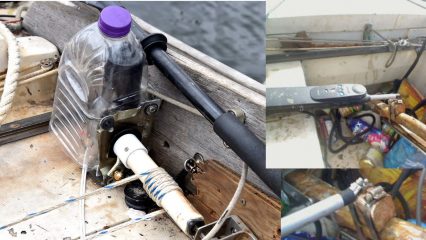
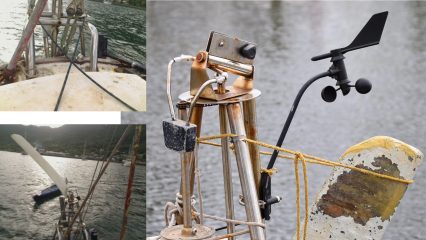
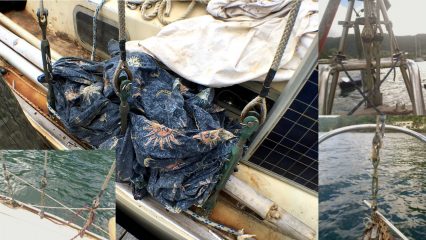
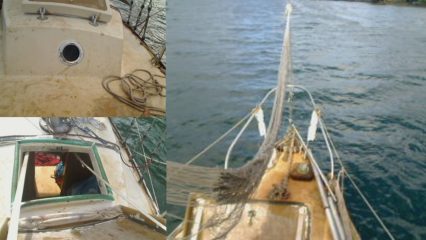
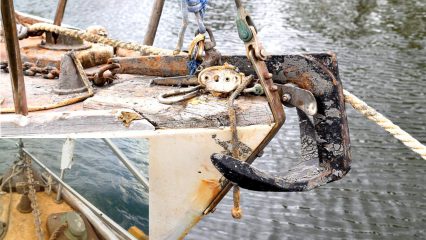
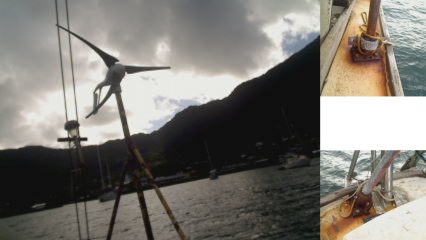
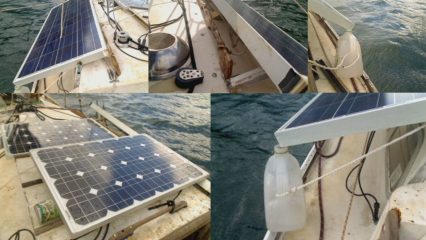
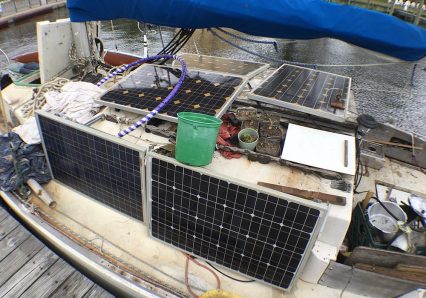
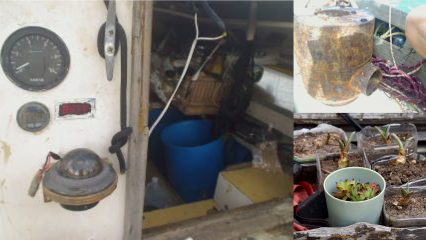
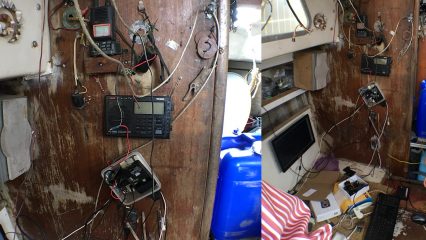
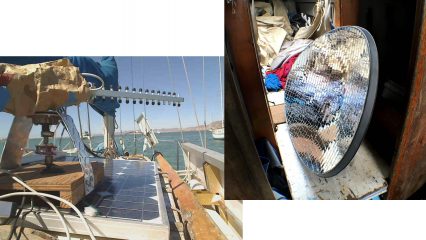
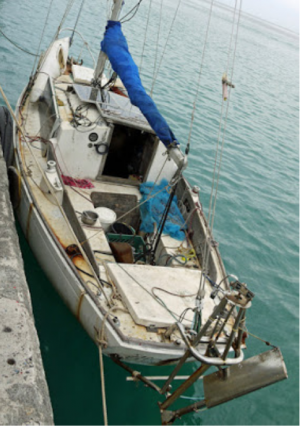
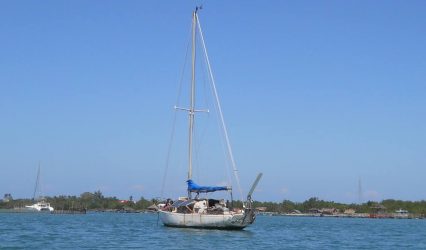
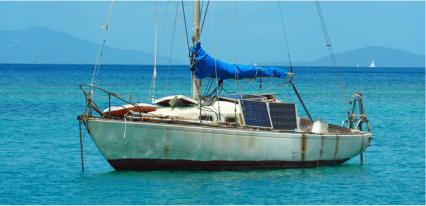
Quick Facts
- Model: Cruising
- Year Built: 1973
- Hull #:
- Vessel Name: (last known as Alexandra)
- Owner Name: (last known owner was Sean D’Epagnier)
- Hailing Port: (last known hailing port was San Francisco, California)
Owner Comments
October 27, 2020 – [Sean wrote] “The Bristol 27 is still a great boat. With synthetic rigging I was not afraid to overpower it most of the time which gave it speed similar to larger cruising boats. It could tack in 50ft wide channels and safe in storms at sea. I don’t know the hull number anymore, I threw out the last papers a few weeks ago.
I lost Alexandra in a boatyard I couldn’t pay to store it anymore, I had sailed on a different boat and had to either go back and fix her or get a different boat and this happened during corona virus lockdowns. The trimaran ended up not costing too much more. As soon as I stopped paying the guy at the boatyard gave her away to a local person. For all I know he scrapped the mast and boom and cut the lead out then disposed of the rest.”
[Here’s an image of Alexandra sailing into the evening:]
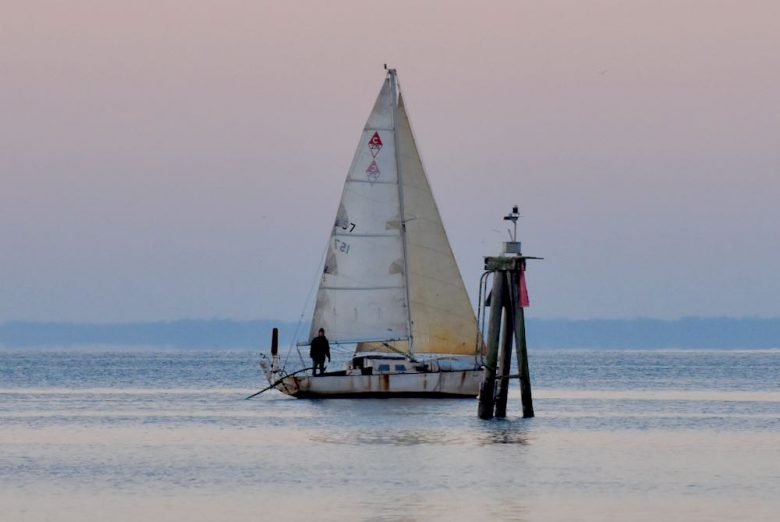
2015 – [At dock in Rodrigues, Republic of Mauritius:]
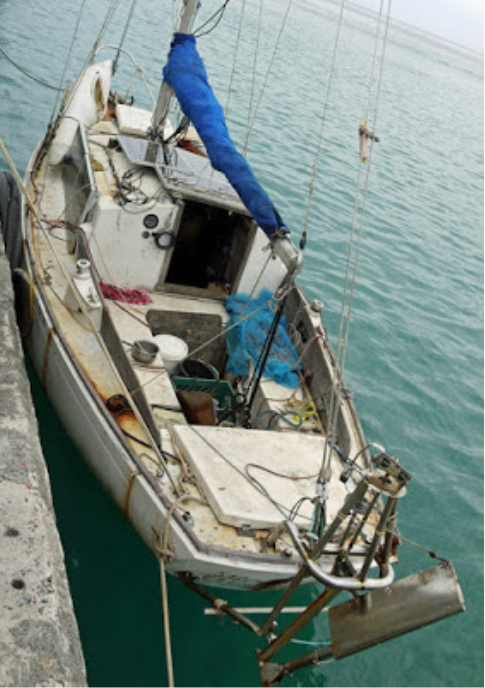
2014 – [At anchor in the Philippines:]
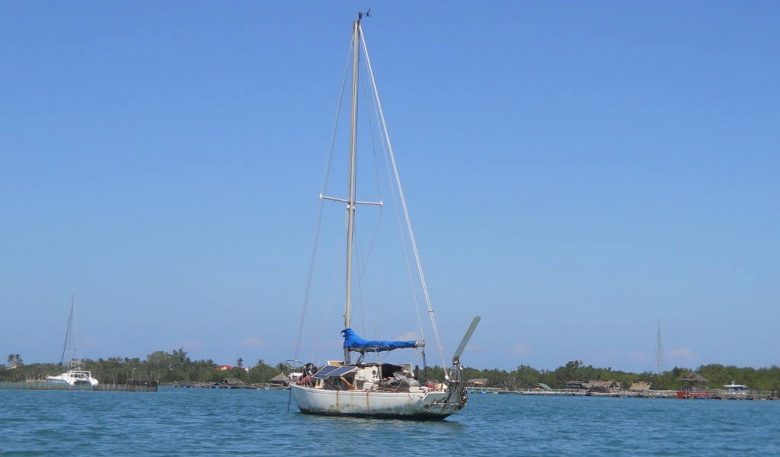
January, 9 2012 – I finally got a torqeedo electric motor, but I haven’t installed it yet. I should be able to cruise at 3-4 knots using only 30 amps or so (24 volts). For now I can go 2.75 knots at 70 amps 12 volts. I have navigated 5 miles or so up 30meter wide rivers.
I’m in new zealand now, and I plan to circumnavigate the islands. I can’t wait to get down to fiordland! It is crazy since we got our boats around the same time, and I spent just a week out of water in a boatyard, the rest of the time I am floating somewhere (besides all the times I run aground). I have just done my second bottom job. The paint from before was worn out. I careened laying on the side up a river here, then the next time just tied to some poles and stand up on the keel. Last time I used 2 coats of paint. This time I have 3-4 depending on where. If I were you, I would make sure to use good adhesion, maybe put some primer on, but then probably use 2 gallons of paint so it will last 4 years.
My windgen broke. I am happy not to have it. I don’t recommend putting anything but the smallest wind generator on because it greatly affects the sailing performance, not to mention all the other issues.
July, 16 2011 – I did a lot of modifications in non-standard ways. I have a sculling oar. A bunch of electric outboards. 600 watts of solar panels. Synthetic standing rigging. Electric cooking. Unsinkable with flotation foam. 3 different spinnakers etc etc… The list goes on, and I feel like it would be good to share some of my ideas and experiences with this boat.
[Here’s an image of this boat in the boatyard in San Francisco:]
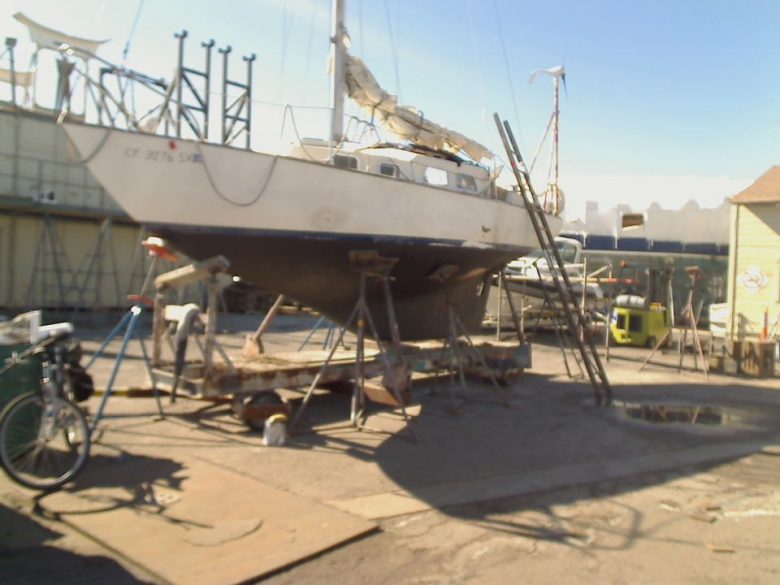
In the boat yard for repairs
Boat Features
+ Anchor – I am anchored with 22lb claw style anchor and 140ft of chain. Half 3/8″ half 7/16″.
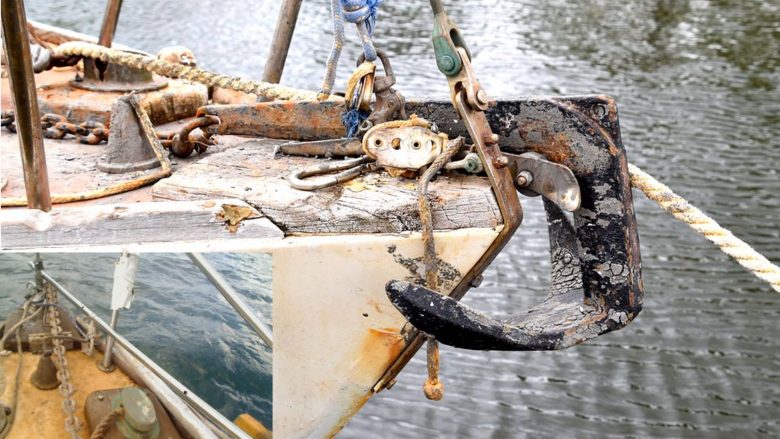
Anchoring Gear
+ Anchor light – Normally these cost $3, but the Dana Pt harbor patrol issued me one when I was anchored without a light.
+ Autopilot – Simrad tp22. It works, doesn’t use too much power, but at times in very light winds it is brain damaged. I use my monitor windvane most of the because it performs better, uses no power, and will not wear out as easily. This is good for motoring and use in protected water.
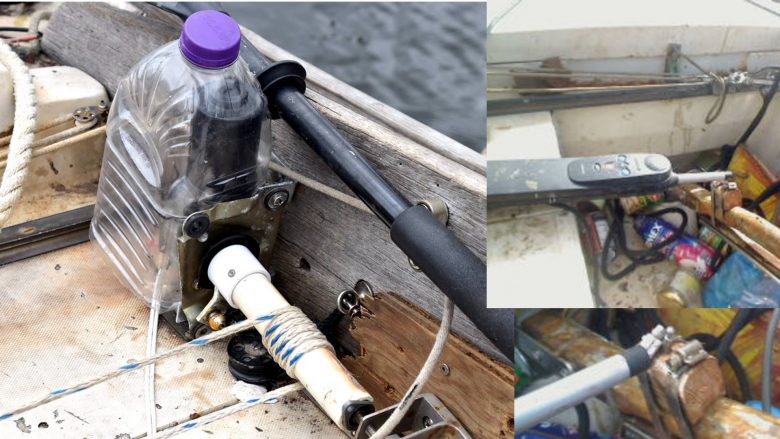
Autopilot detail
+ Bicycle – In poor shape due to water getting in the aft locker, but it works and it’s the best form of transportation on land ever invented (walking was not invented)
+ Cleats – I bolted large 8″ cleats to the outside of the hull with 1/4″ bronze backing plate. These have proven to be very useful, and are nice for running a stern anchor or I plan on using them for drogues. I sometimes sheet spinnakers here. The cleats on deck work too, but it’s nice having extra, and they only cost $1
+ Glass – I fillled numerous 2-4″ holes on my deck. This includes holes for fuel and water filling, as well as portholes. Below the waterline I filled both the holes used for the head and the engine watercooling intake and exhaust.
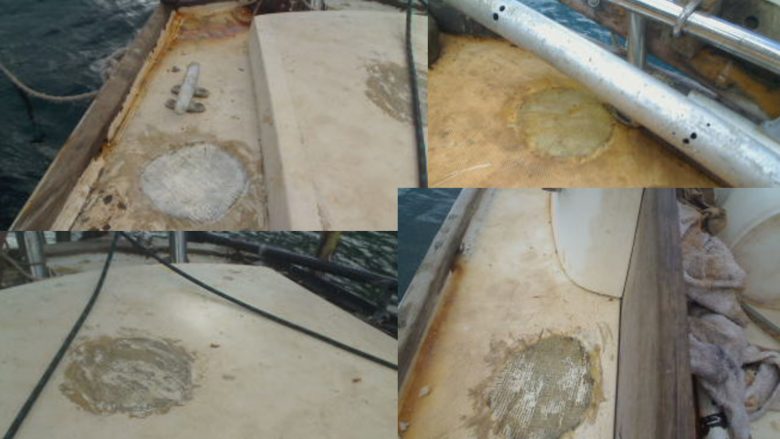
Fiberglass repair work.
+ Hammock – It is easy to put a hammock between forestay and mast! It works great and the boat rocks me with the waves.

Foredeck hatch, portlight and hammock.
+ Handrail – I carved handrail out of oak. It cost only $2 instead of whatever teak costs.
+ Hatch – My hach opens forward to keep the waves out. Unfortunatly it leaked water when waves forced their way in. I lined it with hose cut in pieces, then used 5200 to attach them. On the hatch itself, I glued some rubber tubing. This mostly keeps water out, but I still got some drips, so I put a piece of towel in that I hope will help even more.
+ Instruments – Water speed gauge came with the boat but doesn’t work. Then I have digital depth sounder and temperature sensor. Below that is a compass which has an LED light for night use.
+ Motor – A 46lb thrus minn-kota electric motor. It pushes the boat 2knots in flat water by itself. This type of electric motor uses roughly 1 amp for each pound of thrust, so 40-50 amps. It can rotate 360 to allow extreme maneuverability. I have 2 more motors, one the same size, another smaller 24lb thrust. With the 46 and 24 at the same time I reach almost 3knots.
As for electric, I think it’s the best choice. It is always charging over solar panels so you never need fuel or oil, no noise and no maintainance. Diesel is almost $5 a gallon here, and $3 a liter on some islands. I met a lot of people who said they considered electric, but didnt do it. I think its a shame since the world is already too polluted. It’s cheaper initially and costs less in the long term, and has so many advantages! The only disadvantage compared to diesel is you can’t just fill up a tank and motor 800 miles at full speed, but who really needs to do that anyway?
You can motor slowly indefinately off the sun. Depending on the setup, you can go from 0 to 6 knots in 2 boatlengths. Everyone knows electric cars out-accelerate gas, and therefore can deliever much higher power in bursts.
My motors are weak, 3.5 knots top speed in flat water, but that’s what I get for using cheap and free motors that are 20+ years old. Too bad I can’t afford $350 to buy a high efficiency 14hp etek motor. Then the boat could travel at 3knots in full sun without even draining the batteries! Of course I would need to figure out how to charge 48v battery from 12v panels, maybe another $200 boost converter, or put them in series and sacrifice shade tollerace. Then another $100 for a motor controller… I already have 8 golf cart batteries wired at 12v, so rewire for 48v. Factor in other electronics like a 48volt inverter, and 48->12v converter, and it would be close to $1000. Maybe if I make some money…
In the future, I wouldn’t hesitate to go sailing without an engine or motor. They really aren’t needed the way people make them out to be. I have gone in tight passes (30 meters wide against the wind) and sailed in marinas, entered unfamiliar atolls at night, sailing and using the tides to my advantage. I have run aground 3 times and sailed off the first time, used the anchor to turn myself 180 then sailed off the second time, and winched myself off the third time (first I broke a sheet winch, then used the halyard winch). Try not to run aground, but if you do, this boat can take the abuse.
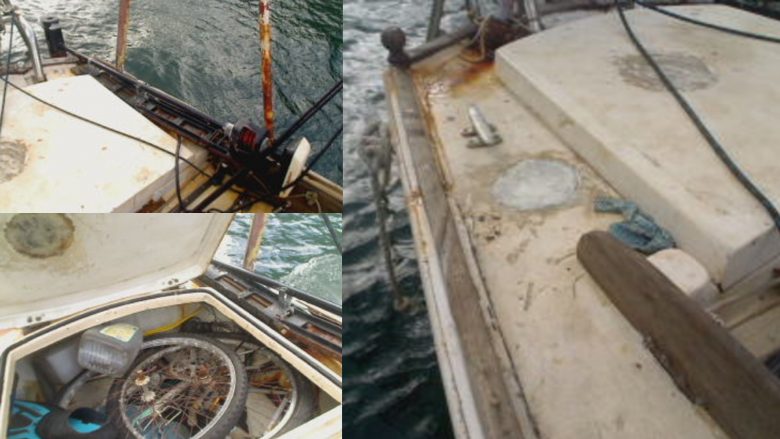
Lazarette area with electric motor and bike storage.
+ Porthole – Because my hatch opens against the waves, at anchor, it is hard to get air in. This hole lets a lot more air in when opened.
+ Preventer – I need lines to hold the boom out so it can not move around when the waves roll the boat. This is pretty much a requirement. I attach the preventer block to the lifeline stantions forward of the mast so it works well even when the boom is out quite far.
+ Radar – The furuno radar is proven to be a good unit. It works well, and I built a mount to bolt it to the mast. The cable going to it is glued to the front of the mast with gorilla glue.
+ Rain collector – Underway I get my water from the mainsail. With a reef in place, the water comes out like a hose during a squall. At anchor, I get the rain off my solar panels. I am getting enough water for my use in pago pago off 20sq ft of solar panels.
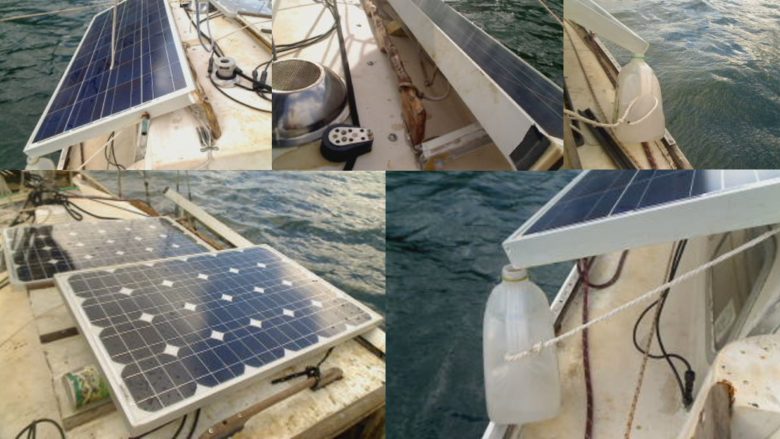
Solar panels configurations, including rain collection.
+ Running Light – I put in all LED running lights for reliability and low power consumption. I took a bunch of leds, then soldered them together and seeded it in epoxy to keep water out. Then I carved an enclosure from wood, and glued plexiglass on the front to get another complete enclosure to keep water out.
+ Sculling Oar – Even if you have a motor, the sculling oar is more reliable and it’s more fun to pull up to a dock under. I got all the parts for mine free except the trailer hitch cost me $9. I need to get someone to take video of me using it.
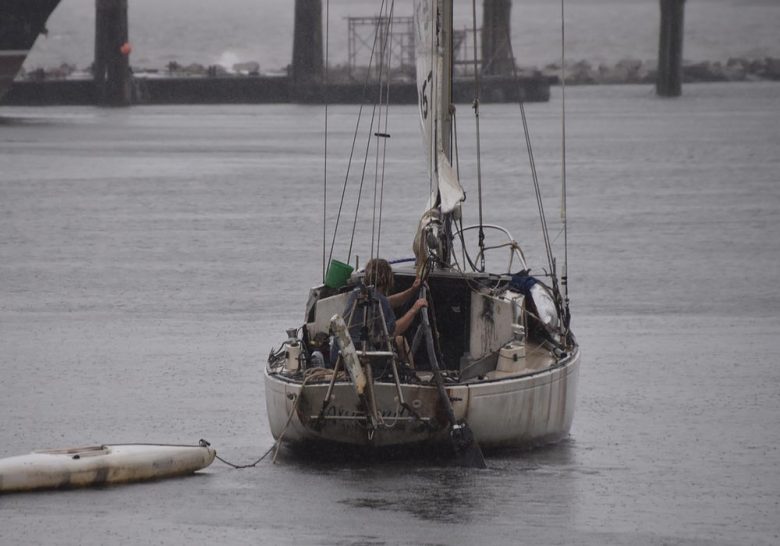
Using the sculling oar.
+ Solar Panels – I have 2x 115w and 8x 50w panels. I usually only have 2 or 4 50w panels deployed keeping the rest in reserve. I get 15 amps or so into my batteries, but I would probably be seeing 25-30 amps with all the panels.
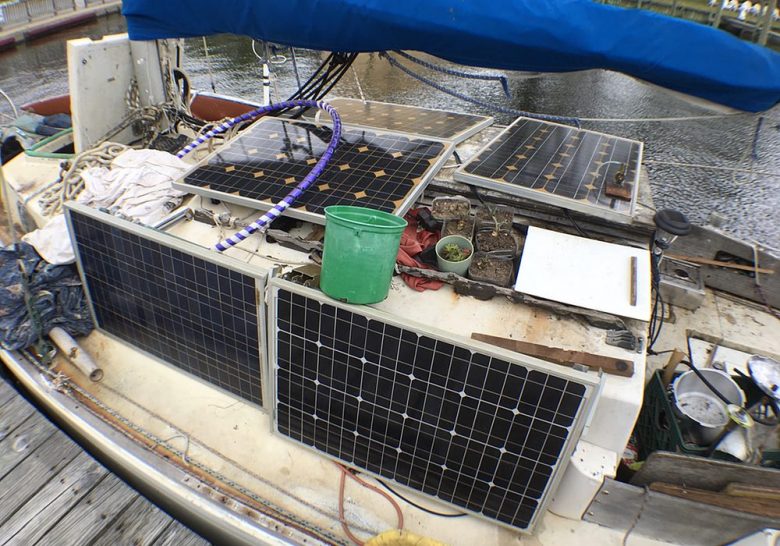
Solar panel configuration.
+ Stays – I put dynex dux 7mm standing rigging to replace the 3/16″ wire. This stuff cost $1.80 a ft, and ended up being cheaper than stainless. It does not rust, corrosion crack or fatigue like stainless. It weighs 1/8th as much. I considered galvanized wire as it would have been the cheapest route, and also very strong, but can corrode easier (unless you seal it with tar), and it still weighs a lot. I used 1/2″ bronze turn buckles (12,000lb breaking strength) to upgrade from 5/16″, and my chainplates are 1/4″x1.5″ aluminum bronze. Overall everything is 4x stronger than the stock rigging with the weakest link being the tangs on the mast which are quite strong. I have two backstays for redundancy.
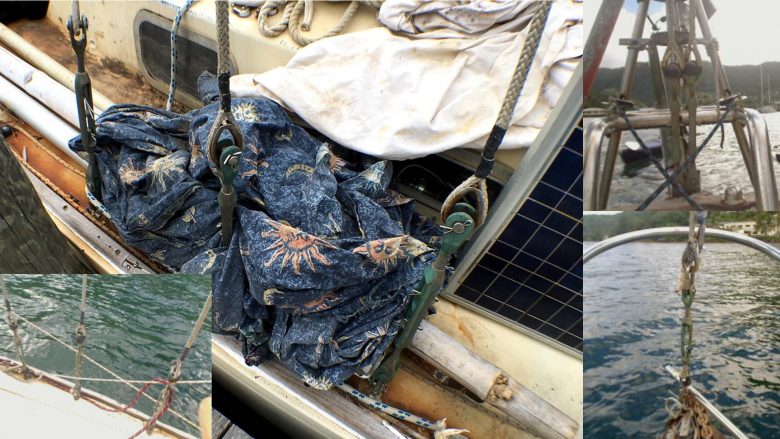
Synthetic stays.
+ Wifiaimer – I built an automatically aiming wifi antenna to get better internet connectivity.
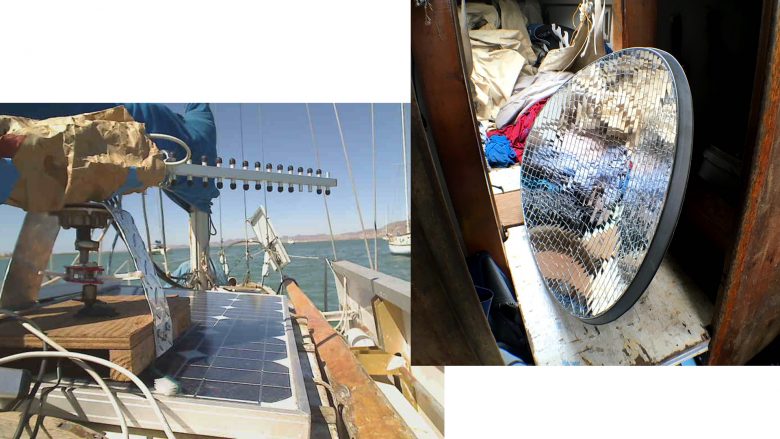
WiFi improvements.
+ Wind generator – I have an air-x marine wind generator. This wind generator is one of the noisiest out there, and it doesn’t do much in <15knots. At 15knots it gives 2-3 amps, by 20knots 9-10 amps, and it will put out 30+ amps in higher winds. Eventually above 35knots it shuts down due to overspeed. This leaves much to be desired.. a wind generator that is quieter, one that outputs 2-3 amps in 10 knots, and one which can output maximum power no matter how much wind. The air breeze probably does the first 2, but it still isn’t very quiet, and it _never_ puts out more than 12 amps, so I am not convinced it is actually better.
So far I have not found a wind generator that can do all of the above, there are better ones on the market (like spreco silentwind) but for the price, I am still convinced the air-x is one of the best values. In the future I would either not have a wind generator, build my own, or get a really cheap secondhand one.The mount is all steel. I used door hinges to get the angle to bolt to the deck on the legs. Everything is rubber isolated. The mount cost me $15 from a recycled building supplies center in san francisco.
+ Wind Vane – I have a monitor wind vane. It performs as expected.. reliably and in all conditions. I paid $1000 for this thing, as much as the boat! But it is definatly work it. As the boat rides waves, the wind direction changes, and it reacts accordingly. I put a much taller lighter vane on which greatly enhances performance in light winds, but still works in heavy winds (up to 35knots)
Most people don’t realize it, but the reason these things work so well is they do not only just steer to the wind, they also can “feel” the boat’s rolling motion with the pendulum oar, and automatically compensate for it. The main rudder moves in tune to the rolling motion to automatically dampen it. This is the reason these things work so ridiculously well. Most electric autopilots do _not_ do this. Very few even have gyros at all, and the ones that do probably have a yaw gyro not a roll one.
+ Wood Stove – I have a simple but effective stove I can use to burn driftwood for cooking. The walls are insulated with 3″ of perlite. This is a rocket stove, and it allows you to build a very small hot fire.
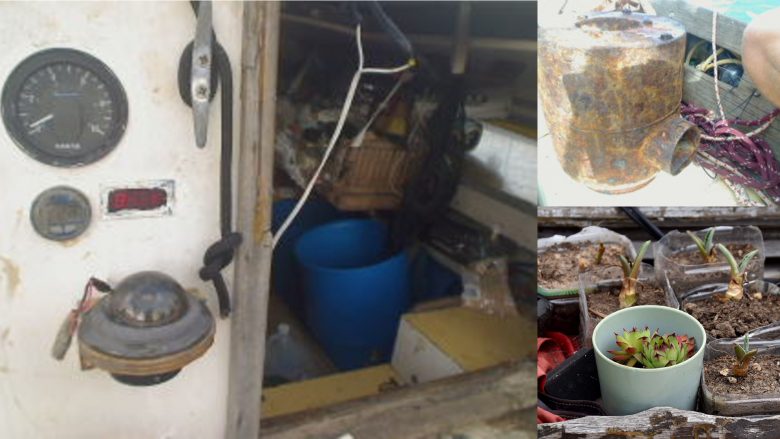
Companionway, wood stove and plants.
Pingback: More running around « Medical Sailing Ministries